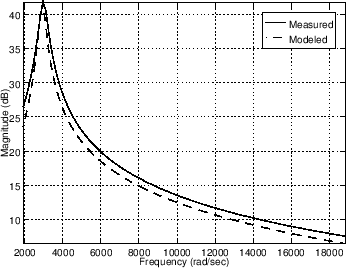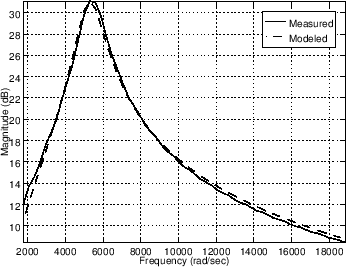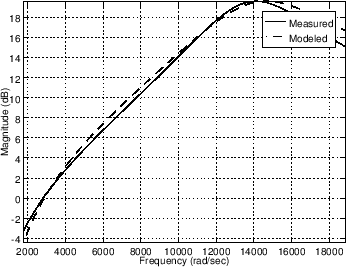Next |
Prev |
Up |
Top
|
REALSIMPLE Top
Digitizing the CryBaby
Figures 14, 15, and 16 (solid lines) show the amplitude responses
of the author's CryBaby wah pedal measured (as described
in §6.1.2 below) at three representative pedal settings (rocked
fully backward, middle, and forward). Our goal is to ``digitize'' the
CryBaby by devising a second-order sweeping resonator that audibly
matches these three when the ``wah'' variable is  ,
,  , and
, and  ,
respectively.
,
respectively.
Figure 14:
Measured (solid line) and modeled (dashed line) amplitude responses of the CryBaby pedal rocked back full.
 |
Figure 15:
Measured (solid line) and modeled (dashed line) amplitude responses of the CryBaby pedal set to the middle of its excursion.
 |
Figure 16:
Measured (solid line) and modeled (dashed line) amplitude responses of the CryBaby pedal rocked fully forward.
 |
Subsections
Next |
Prev |
Up |
Top
|
REALSIMPLE Top
Download faust_strings.pdf
![]() ,
, ![]() , and
, and ![]() ,
respectively.
,
respectively.


